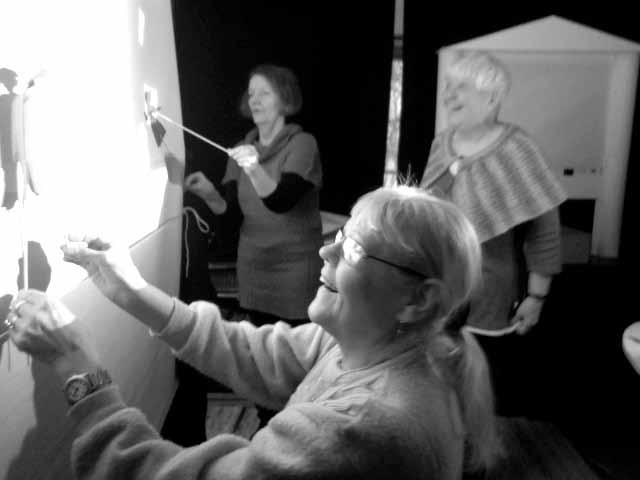
2 minute read
Puppetry for a blind eye
Maarit Lehtosalo, Raija Ravaska and Leena Väyrynen get to know shadowtheatre.
Lapland Puppet Association (LPA) and Association for Visually Impaired People in Lappland (AVIPL) arranged in November a two-weekend workshop in Rovaniemi. It had been planned the whole year 2011 and finally we made it! The organisers were Kaarina Konttavaara, whose work at AVIPL includes planning different workshops for the clients, and Johanna Salo, who is a puppeteer working for LPA.
Advertisement
The aim was to give a full idea of the possibilities puppetry has for visually impaired people and to create small numbers both for blind and non-blind. AVIPL (www.lapinnakovammaiset.fi) is a 58-year old association with more than 400 members. They actively organise courses for the visually impaired and one of their goals is to prevent social exclusion. Nowadays almost all big theatres have simultaneous interpreters who enable the visually impaired to enjoy theatre too. There are interpreters also for art exhibitions and museums. In Tampere there is a professional theatre called Theatre Sokkelo which is run by visually impaired people. So there is a huge interest to participate and develope artistic skills. There are a few associations whose work is mainly the cultural development for visually impaired. How to replace visuality
All of the participants were visually impaired, a few of them completely blind. The challenge was to find a way to make visual art without seeing it yourself. We started by making a pot of coffee, putting the guide dogs on their places and getting to know each other. The participants came from all around Lapland. After a while I took out the puppets and we started getting to know different puppetstyles, mechanics and ways to perform puppetry. We discussed the differences between theatre with human beings and with puppets, which only made everybody more interested of the subject. - When I got the opportunity to know many different puppets and materials, my mind immediately went into the world of fairytales and fantasy, said Raija Ravaska, who attended the course.
Different solutions
We exchanged thoughts on the meaning of sounds, smells and sensations on stage. We came to the conclusion that if the performance and the audience had straight contact and the visuality was brought to other senses, the performance could be opened to visually impaired or deaf with a totally new and radical way. For people with some eyesight it is important to be able to use that sight. They can usually see if used strong contrasts. Experiencing comprehension is important. Description or interpretation, which are used in










